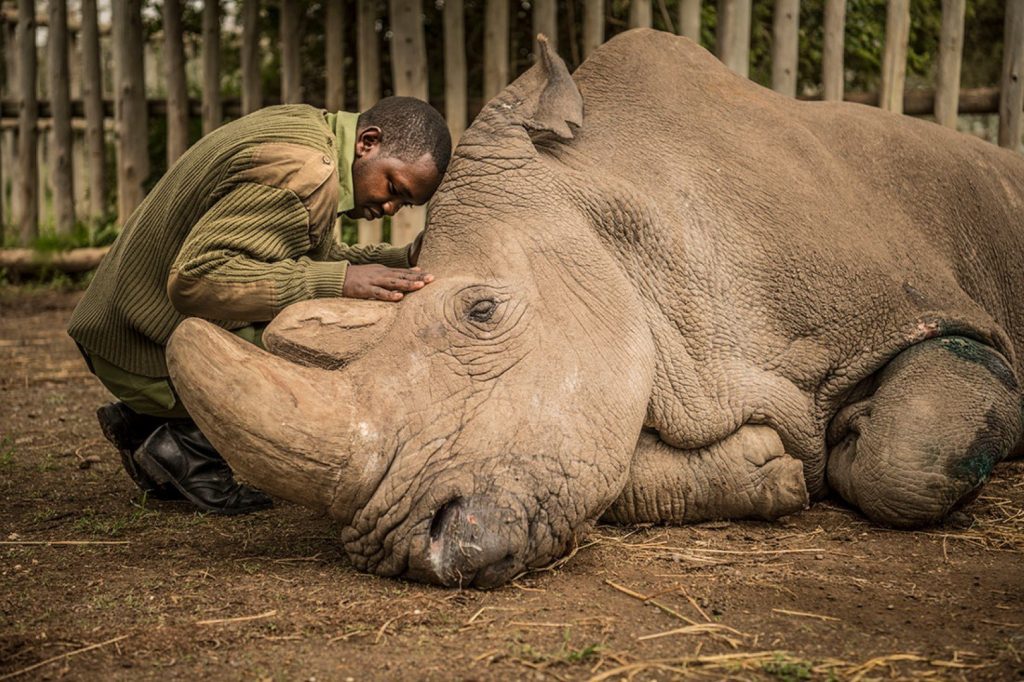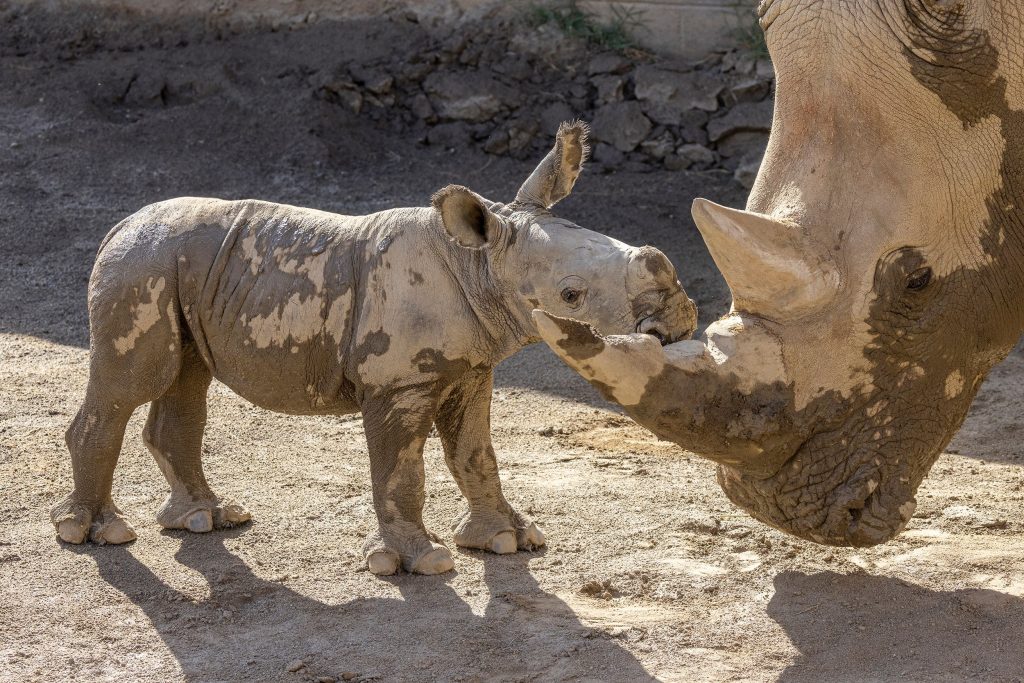
Test postGenome of near-extinct northern white rhino offers hope for reviving the specie
Adapted from a story by The Scripps Research Institute

Bringing Back a Giant: Scientists Map Genome of the Northern White Rhino in Bid to Prevent Extinction
The northern white rhinoceros is one of the rarest animals on Earth. With just two females remaining and no natural way for the species to reproduce, its survival depends entirely on scientific innovation.
Now, an international team of researchers—including scientists from Scripps Research, the San Diego Zoo Wildlife Alliance, the Max Planck Institute for Molecular Genetics, and other collaborators—has successfully mapped the complete genome of a northern white rhino. This milestone marks a critical step toward rescuing the species using advanced reproductive technologies.
The newly sequenced genome provides a reference to evaluate the health and integrity of previously developed stem cells derived from northern white rhinos. Eventually, these cells could be used to generate viable sperm and eggs, potentially leading to the birth of new rhinos.
The genome has been published in PNAS.
“What’s so exciting about this milestone is that we’re getting closer to rescuing animals that might otherwise go extinct in our lifetimes,” says co-senior author Jeanne Loring, Professor Emeritus at Scripps Research and a research fellow at the San Diego Zoo Wildlife Alliance. “This is great progress not only for white rhinos but for the entire field of animal conservation.”
To achieve this breakthrough, researchers employed cutting-edge DNA sequencing and genome-mapping techniques. The data was sourced from preserved skin cells of a male northern white rhino named Angalifu, who lived at the San Diego Zoo Safari Park until his death in 2014. His cells were cryopreserved in the San Diego Zoo Wildlife Alliance’s Frozen Zoo, a biobank of living cell cultures from endangered species.
“We layered together multiple technologies to build the most accurate genomic map possible,” says Loring. “It’s like the rhino version of the Human Genome Project.”
This high-quality genome will play a central role in ongoing efforts to revive the species. In 2011, Loring’s team generated the first induced pluripotent stem cells (iPSCs) from northern white rhinos, capable of becoming any type of cell in the body—including eggs and sperm. Working with the San Diego Zoo Wildlife Alliance, the team has since produced additional stem cell lines from nine individual rhinos.
“Collaboration was integral to achieving this milestone,” says Marisa Korody, a conservation genetics scientist at the San Diego Zoo Wildlife Alliance. “This high-quality reference genome is a key piece of the puzzle. It guides our next steps and allows us to evaluate how the stem cells are functioning. None of it would be possible without the Frozen Zoo and the foresight to preserve these cells decades ago.”
However, the absence of a reference genome had long presented a major obstacle: scientists couldn’t be certain whether any stem cell lines had acquired harmful mutations during lab growth—a common issue in both human and animal stem cell work.
Thanks to the new genome, Loring’s team was able to re-examine earlier stem cell lineages and found that one promising line was missing more than 30 million base pairs, including over 200 genes—many of which are essential for reproduction and tumor suppression.
“If we hadn’t built this genome, we wouldn’t have known that,” Loring explains. “We thought we had a good stem cell line, but the mutation would have made it unsafe for reproductive use. Now, we can go back and screen all the others. This genome becomes the gold standard for deciding which cells to move forward with.”
The completed genome has also settled ongoing debates about the compatibility of northern and southern white rhinos. Earlier studies suggested significant genetic differences that might complicate embryo implantation. However, updated analysis shows their genomes are strikingly similar, paving the way for southern white rhinos—which are more numerous—to act as surrogate mothers without major complications.
For Loring, who has been involved in this project since 2007, the achievement symbolizes the power of modern science.
“Now that we have their genome, we can apply all the tools we’ve developed for humans—CRISPR gene editing, reporter genes, everything—to help rescue them.”
This work has broader implications beyond rhinos. Loring emphasizes that efforts to save hundreds of endangered species—from mammals and birds to plants and corals—depend on the kind of biobanking practiced by the Frozen Zoo.
“The Frozen Zoo had the foresight to freeze actual cells from these animals,” she says. “That means we’re not trying to recreate a species from scraps of ancient, degraded DNA. We have the real thing.”
Ultimately, the goal is to generate healthy embryos, implant them into surrogate mothers, and raise the calves in protected environments. As Loring notes, this isn’t science fiction—it’s a pragmatic application of advanced biology.
“We’re not resurrecting a mystery species—we’re restoring one we still know intimately,” she adds. “The rhino is big, gentle, and unforgettable. It’s the perfect symbol for what science can do to fight extinction.”

